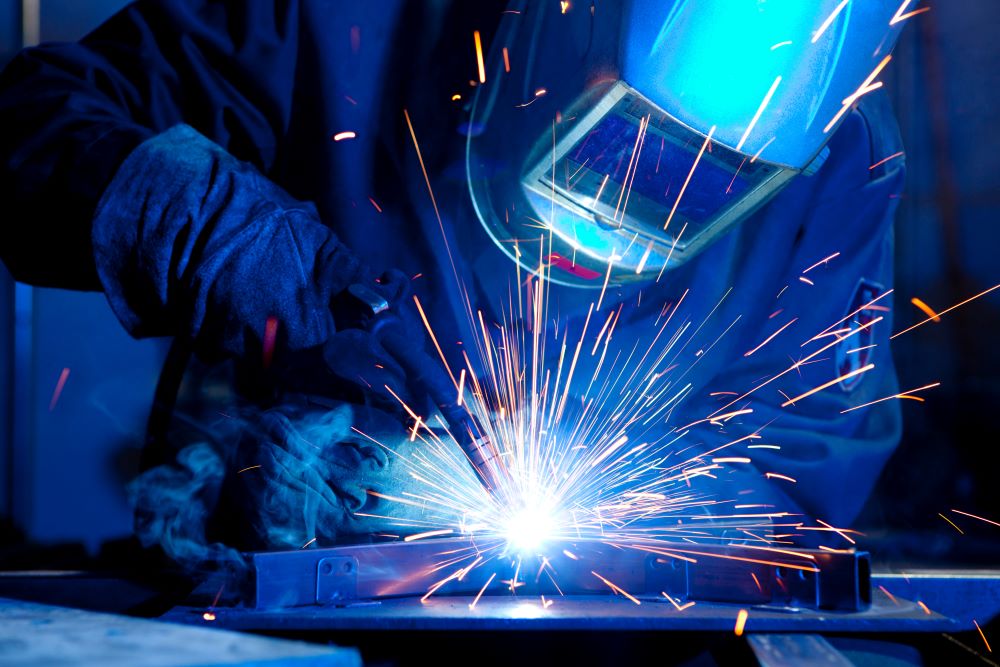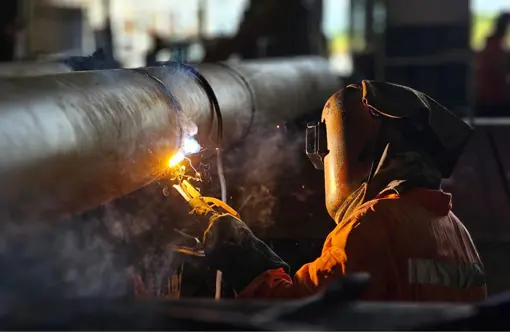All Regarding Welding: Trick Insights Into Techniques and Finest Practices for Success
Welding incorporates a range of methods, each matched for details products and applications. Recognizing these approaches, such as GMAW, SMAW, and TIG, is important for accomplishing ideal outcomes. The appropriate tools and security practices can not be forgotten. As prep work and troubleshooting play crucial roles in the welding procedure, understanding these components can substantially boost the high quality of the end product. What are the crucial aspects that ensure an effective weld?
Recognizing Different Welding Techniques
Welding strategies include a variety of techniques, each suited to details applications and materials. Among one of the most typical strategies are Gas Metal Arc Welding (GMAW), Protected Metal Arc Welding (SMAW), and Tungsten Inert Gas Welding (TIG) GMAW, also called MIG welding, is preferred for its rate and adaptability, making it ideal for thin materials. SMAW, or stick welding, is preferred for its simplicity and efficiency in outdoor settings, particularly with thicker steels. TIG welding uses precision and control, making it suitable for complex work and non-ferrous metals (Belgrade Welding). Each technique has its special benefits and factors to consider, permitting welders to select the most effective method based on the job's requirements, product kind, and preferred end results. Comprehending these strategies is important for successful welding
Vital Welding Tools and Tools
While different welding techniques require certain abilities, the appropriate tools and tools are just as essential for accomplishing quality results. Vital welding devices consists of welding makers, which differ relying on the strategy-- such as MIG, TIG, or stick welding. Protective gear, including headgears, aprons, and handwear covers, assurances safety and comfort during the procedure. On top of that, components and clamps assist protect products in position, ensuring accuracy in welds. Consumables like welding rods, cable, and protecting gas are also crucial parts that affect the top quality of the weld. Additionally, tools such as cutters and grinders assist in surface preparation and post-weld finishing, adding to an expert outcome. Spending in top quality tools inevitably improves the performance and performance of welding jobs.
Safety Practices in Welding
Correct security methods are crucial in the welding sector to secure employees from potential risks. Welders should use appropriate personal safety devices (PPE), including safety helmets with correct shading, handwear covers, and flame-resistant clothing. Sufficient ventilation is crucial to reduce exposure to hazardous fumes and gases created during the welding procedure. Furthermore, workers must be trained in the appropriate handling of welding tools to stop accidents. Fire security procedures, such as maintaining combustible materials away from the welding area and having fire extinguishers easily offered, are necessary. Regular examinations of tools and work areas can assist recognize prospective threats before they cause crashes. By adhering to these safety practices, welders can produce a more secure working environment and decrease risks connected with their trade.
Preparing Materials for Welding
Preparing products for welding is a vital step that greatly affects the high quality and integrity of the final product (Belgrade Fabrication). Appropriate prep work involves cleansing the surfaces to remove impurities such as dirt, rust, and oil, which can compromise the weld. Strategies such as grinding, fining sand, or making use of solvents are typically used to accomplish a tidy surface area. Furthermore, making sure that the products mesh snugly is vital; gaps can result in weak welds. It's additionally essential to consider the placement and positioning of the elements, as this will influence the convenience of welding and the last result. Picking the ideal filler material and guaranteeing compatibility with the base metals is crucial for accomplishing solid, durable welds.
Tips for Getting High-Quality Welds
Accomplishing top quality welds calls for focus to information and adherence to best techniques throughout the welding process. Proper joint preparation is essential, making sure surface areas are complimentary and tidy from impurities. Choosing the ideal filler product and welding method based upon the base steels is crucial for ideal bonding. Maintaining consistent traveling speed and angle while welding can avoid issues and advertise harmony. In addition, controlling heat input is essential; too much heat can bring about warping and deteriorated joints. If needed, consistently evaluating the welds throughout the process enables for immediate adjustments. Employing ideal post-weld therapies, such as cleaning and anxiety relief, can enhance the durability and stability of the weld, inevitably making certain a successful outcome.
Repairing Usual Welding Issues
Welding usually provides difficulties that can affect the high quality and integrity of the end product. Typical concerns such as porosity, irregular weld grains, and overheating can emerge, each needing particular troubleshooting techniques. Understanding these issues is necessary for welders to improve their abilities and achieve ideal results.
Porosity Issues Explained
Although porosity can typically be neglected, it remains a vital concern in welding that can compromise the honesty of a completed product. Porosity refers to the existence of tiny gas pockets within the weld grain, which can lead and compromise the joint to early failure. This problem usually arises from pollutants, moisture, or inappropriate shielding gas protection throughout the welding procedure. To mitigate porosity, welders should verify that the base products are tidy and completely dry, use appropriate securing gases, and maintain constant welding criteria. Consistently inspecting the equipment saw welding and atmosphere can additionally assist determine possible problems before they materialize in the weld. Resolving porosity effectively is vital for accomplishing solid, long lasting welds that meet top quality criteria.

Inconsistent Weld Beads
Irregular weld grains can substantially influence the high quality and stamina of a completed product. Numerous elements add to this issue, consisting of incorrect traveling speed, inaccurate amperage settings, and irregular electrode angles. When the welder relocates also rapidly, a grain may show up slim and lack infiltration, while relocating also slowly can cause excessive build-up. Additionally, utilizing the incorrect amperage can lead to either damaging or extreme spatter, both of which compromise weld stability. The welder's method, such as irregular lantern movement, can also cause irregular bead look. To mitigate these troubles, welders must focus on keeping constant, regulated motions and ensuring proper devices settings to achieve uniformity in their welds. Consistency is essential to attaining solid and reputable welds.
Getting Too Hot and Warping Issues
Excessive heat during the welding procedure can bring about significant overheating and buckling concerns, affecting the structural stability of the workpiece. These problems frequently show up as distortion, which can endanger positioning and fit-up, making additional assembly testing. Aspects adding to overheating consist of the selection of welding criteria, such as voltage and take a trip rate, in addition to the sort of material being bonded. To minimize these problems, welders should maintain regular travel rate and proper warm input while checking fupa 12 the workpiece temperature level. In addition, preheating or post-weld warmth treatment can assist relieve anxieties brought on by fast cooling - Montana Mobile Welding and Repair Belgrade Welding. Normal evaluation and adherence to ideal methods are necessary in preventing overheating and guaranteeing the durability and dependability of welded structures
Often Asked Concerns
What Are the Profession Opportunities in the Welding Sector?
The welding sector provides varied career possibilities, including positions as welders, educators, inspectors, and engineers. Professionals can operate in Get More Info manufacturing, building, aerospace, and auto industries, taking advantage of solid need and affordable wages in various functions.
Exactly How Can I Improve My Welding Speed Without Compromising Quality?
To improve welding speed without sacrificing quality, one should practice reliable methods, keep devices, maximize settings, and improve hand-eye sychronisation. Routine training and seeking responses can also considerably add to attaining faster, high-quality welds.
What Certifications Are Available for Welders?
Numerous certifications exist for welders, including those from the American Welding Culture (AWS), the National Center for Building And Construction Education and Study (NCCER), and different industry-specific organizations. These qualifications improve employability and show ability efficiency.
Just How Does Welding Influence the Residences of Metals?
Welding affects the residential or commercial properties of steels by modifying their microstructure, which can bring about adjustments in toughness, ductility, and hardness. Warmth input and air conditioning rates during the procedure significantly impact these material attributes.
Can I Bonded Dissimilar Metals With Each Other?
